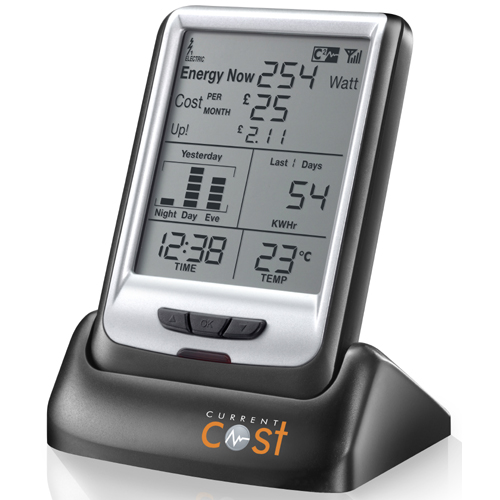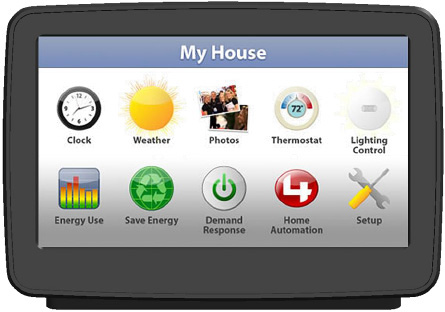Because I didn't want to spend $50, $100, or more for every 5m LED spool, my strips have all come from China-direct sources. Read on to learn about the issues I’ve encountered.
The biggest problem I found with the two LED strip types I evaluated is that the conductor resistance is simply too high. It's not a big deal if you're cutting the strips to, say, 1m lengths, but using longer pieces means feeding power to a few spots along the strip – not a big problem, as there are solder pads every three LEDs, but a pain nonetheless.

The 3528 LED strip

And the higher brightness 5630 LED strip
Note
that these are both 12V, 60 LED/m, 5m strips. They consist of 100
three-LED groups: each group is a series string of the LEDs and a
current-limiting resistor. Thus, the load is very nonlinear: a small
change in voltage results in a much bigger change in current than a
resistive load would cause.Here are my findings:
| Cost (USD) |
$4.53
|
$6.94
|
| Width (mm) |
7.7
|
10.5
|
| I (end-fed, A) |
1.1
|
2.4
|
| I (ideal, A) |
1.9
|
4.2
|
| I (LED, near-end, mA) |
19
|
42
|
| I (LED, far-end, mA) |
7.7
|
18.5
|
| V (across resistors, near-end, V) |
2.5
|
1.65
|
| V (far-end, V) |
10.0
|
10.3
|
| R (resistors, Ω) |
130
|
39
|
| R (one 5m conductor, Ω) |
2.1
|
0.7
|
The key takeaway from the table is the drop in far-end LED current to about 42% of the near-end current when fed at only one end.
My workaround is to attach the 12V wiring to the 5m strips at two or three spots along their length. The ideal two-spot attachment points are at ¼ from each end, making no LED more than 1.25m from a power source, though that will still result in a fair bit of brightness loss. The 5630 strips have wire pigtails at both ends, so they make easy – if suboptimal – connection points. Three connections – 1/6 from each end and the center – would make the maximum LED-power distance 0.83m. Believe it or not, the cheapest suitable wiring I can find is standard 14/2 (AWG 14, two- (plus ground) conductor) AC cable. Cheapest, at least, when bought on a 150m spool.
Despite the low prices, all the strips I bought also came with a little control board that offers dimming and various blinking patterns, and actually works perfectly well, even to the point of maintaining its setting with power off.
I'm in the process of installing many LED strips in my house. You may find it instructive to look at the couple I've evaluated.
Because I didn't want to spend $50, $100, or more for every 5m LED spool, my strips have all come from China-direct sources. Read on to learn about the issues I’ve encountered.
The biggest problem I found with the two LED strip types I evaluated is that the conductor resistance is simply too high. It's not a big deal if you're cutting the strips to, say, 1m lengths, but using longer pieces means feeding power to a few spots along the strip – not a big problem, as there are solder pads every three LEDs, but a pain nonetheless.


Here are my findings:
The key takeaway from the table is the drop in far-end LED current to about 42% of the near-end current when fed at only one end.
My workaround is to attach the 12V wiring to the 5m strips at two or three spots along their length. The ideal two-spot attachment points are at ¼ from each end, making no LED more than 1.25m from a power source, though that will still result in a fair bit of brightness loss. The 5630 strips have wire pigtails at both ends, so they make easy – if suboptimal – connection points. Three connections – 1/6 from each end and the center – would make the maximum LED-power distance 0.83m. Believe it or not, the cheapest suitable wiring I can find is standard 14/2 (AWG 14, two- (plus ground) conductor) AC cable. Cheapest, at least, when bought on a 150m spool.
Despite the low prices, all the strips I bought also came with a little control board that offers dimming and various blinking patterns, and actually works perfectly well, even to the point of maintaining its setting with power off.

About sources: Although I’ve bought quite a few items besides LED strips from the GearBest Website, and was usually happy with the results, I no longer patronize them, given the awful PSUs they sold me, but particularly because they won't print my negative reviews about them. Okay, they're probably not unique in either respect, but there are many other similar sites to choose from. Which do you like?
I’m very curious whether the much more expensive strips from other vendors have the same voltage drop problem I've discovered in the cheap ones. If you have any, please run some tests and let us know in the comments.
Because I didn't want to spend $50, $100, or more for every 5m LED spool, my strips have all come from China-direct sources. Read on to learn about the issues I’ve encountered.
The biggest problem I found with the two LED strip types I evaluated is that the conductor resistance is simply too high. It's not a big deal if you're cutting the strips to, say, 1m lengths, but using longer pieces means feeding power to a few spots along the strip – not a big problem, as there are solder pads every three LEDs, but a pain nonetheless.

The 3528 LED strip

And the higher brightness 5630 LED strip
Note
that these are both 12V, 60 LED/m, 5m strips. They consist of 100
three-LED groups: each group is a series string of the LEDs and a
current-limiting resistor. Thus, the load is very nonlinear: a small
change in voltage results in a much bigger change in current than a
resistive load would cause.Here are my findings:
| | ||
| Cost (USD) |
$4.53
|
$6.94
|
| Width (mm) |
7.7
|
10.5
|
| I (end-fed, A) |
1.1
|
2.4
|
| I (ideal, A) |
1.9
|
4.2
|
| I (LED, near-end, mA) |
19
|
42
|
| I (LED, far-end, mA) |
7.7
|
18.5
|
| V (across resistors, near-end, V) |
2.5
|
1.65
|
| V (far-end, V) |
10.0
|
10.3
|
| R (resistors, Ω) |
130
|
39
|
| R (one 5m conductor, Ω) |
2.1
|
0.7
|
The key takeaway from the table is the drop in far-end LED current to about 42% of the near-end current when fed at only one end.
My workaround is to attach the 12V wiring to the 5m strips at two or three spots along their length. The ideal two-spot attachment points are at ¼ from each end, making no LED more than 1.25m from a power source, though that will still result in a fair bit of brightness loss. The 5630 strips have wire pigtails at both ends, so they make easy – if suboptimal – connection points. Three connections – 1/6 from each end and the center – would make the maximum LED-power distance 0.83m. Believe it or not, the cheapest suitable wiring I can find is standard 14/2 (AWG 14, two- (plus ground) conductor) AC cable. Cheapest, at least, when bought on a 150m spool.
Despite the low prices, all the strips I bought also came with a little control board that offers dimming and various blinking patterns, and actually works perfectly well, even to the point of maintaining its setting with power off.

The
bottom chip is an Atmel 24C02 256 byte EEPROM; the other, unmarked
(ASIC or µC). The board seems to be made for RGB given the three
transistors and COLOR button, but those transistors are actually in
parallel. Go figure. As always, the image is larger than it appears.
About sources: Although I’ve bought quite a few items besides LED strips from the GearBest Website, and was usually happy with the results, I no longer patronize them, given the awful PSUs they sold me, but particularly because they won't print my negative reviews about them. Okay, they're probably not unique in either respect, but there are many other similar sites to choose from. Which do you like?
I’m very curious whether the much more expensive strips from other vendors have the same voltage drop problem I've discovered in the cheap ones. If you have any, please run some tests and let us know in the comments.
The
bottom chip is an Atmel 24C02 256 byte EEPROM; the other, unmarked
(ASIC or µC). The board seems to be made for RGB given the three
transistors and COLOR button, but those transistors are actually in
parallel. Go figure. As always, the image is larger than it appears.
About sources: Although I’ve bought quite a few items besides LED strips from the GearBest Website, and was usually happy with the results, I no longer patronize them, given the awful PSUs they sold me, but particularly because they won't print my negative reviews about them. Okay, they're probably not unique in either respect, but there are many other similar sites to choose from. Which do you like?
I’m very curious whether the much more expensive strips from other vendors have the same voltage drop problem I've discovered in the cheap ones. If you have any, please run some tests and let us know in the comments.




